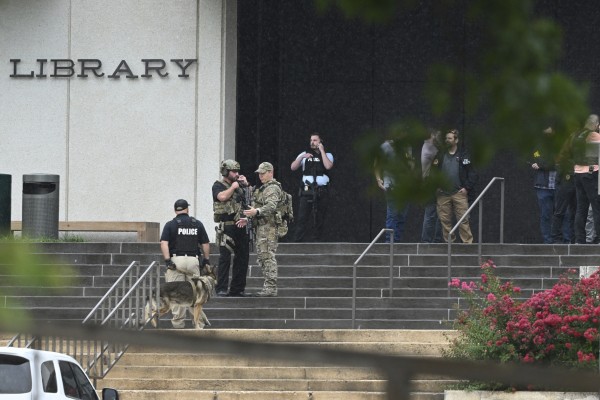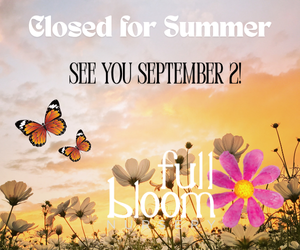A rash of hoax calls about active shooters on college campuses — some featuring gunshots sounding in the background — has sent waves of fear among students around the nation as the school year begins.
The calls have prompted universities to issue campuswide texts to “run, hide, fight.” Students and teachers have rushed to find cover, often cowering in classrooms for safety. Officers have swarmed campuses seeking out the threat. Yet in every recent case, the threat didn't exist.
“It’s looking as if this was another swatting or hoax call,” University of Arkansas Police Department Assistant Chief Matt Mills said after false reports of an active shooter Monday prompted school leaders to cancel classes for the day.
The hoax calls and false alarms have hit at least 11 college campuses from Arkansas to Pennsylvania.
On Monday alone, law enforcement responded to calls claiming there were active shooters at Arkansas, Northern Arizona University, Iowa State, Kansas State, Colorado University and the University of New Hampshire. More calls were made Tuesday at the University of Kentucky as well as Central Georgia Technical College and a nearby high school. The Kentucky call was determined to be a hoax before an alert could be issued.
The goal of swatting, which sometimes uses caller ID spoofing to disguise numbers, is to get authorities, particularly a SWAT team, to respond to an address.
The FBI said Tuesday that it was working with law enforcement on the swatting cases on college campuses, which come as such false reports surge nationwide.
A wave of threats three years ago was believed to have come from outside the country, the FBI said at the time. The agency provided few details about the recent campus threats, including whether they are coordinated, but the calls appear to share similar traits. Most of them involved multiple calls to authorities about an active shooter or shooting, and at least four included the sound of gunshots in the background.
In an era of mass shootings, the calls create a climate of fear and sap law enforcement resources. The FBI stressed in a statement that the threats also put "innocent people at risk.” In 2017, for instance, a police officer in Wichita, Kansas, shot and killed a man while responding to a hoax emergency call.
The emotional toll on students and staff can linger for days or even weeks, said Ken Trump, president of National School Safety and Security Services, a consulting firm that focuses on K-12 safety.
Miceala Morano, a 21-year-old senior journalism major at the University of Arkansas, knows that firsthand. She hid behind a green screen in the broadcast room and called her grandmother as officers outside donned bullet proof vests.
“As of right now, I’m safe. I love you,” said Morano, who was raised on active shooter drills.
As a child, she learned to stack chairs in front of the classroom door and to climb into the ceiling if there was no other way out. Now this.
“There’s just these few minutes where all you really feel is fear, whether the threat’s there or not,” she said.
Casey Mann, a 19-year-old classmate, said she couldn't sleep until 2 a.m. afterward.
“It’s just a scary reality the time we’re living in right now,” she said, her voice choking up. “It just makes me wonder what we’re supposed to expect in the future when it comes to the frequency of events like this.”
The wave of reports began on Thursday, when law enforcement in Pennsylvania received multiple calls about shots purportedly fired on Villanova's campus by a man armed with an AR-15 style weapon. Sounds of gunfire could be heard in the background of the calls.
The calls — which also included a false report of someone wounded by gunfire — sent students gathered for orientation mass rushing into building and prompted the school to go into temporary lockdown. Chairs were scattered on the school's lawn and some students hid in a utility closet.
Two hours later, the lockdown was lifted and the school's president denounced the “cruel hoax.”
“Today, as we are celebrating Orientation Mass to welcome our newest Villanovans and their families to our community, panic and terror ensued,” the Rev. Peter M. Donohue said in a statement.
The same day, Tennessee authorities received calls reporting an active shooter at the University of Tennessee at Chattanooga armed with an AR-15 style rifle and four people shot. Dispatchers reported hearing multiple gunshots on the calls.
“This incident was a criminal act, intended to be disruptive and cause chaos,” the school said in a statement.
The University of South Carolina also received two calls Sunday reporting an active shooter at the school's library, with the sound of gunshots in the background.
The hoaxes are risking creating complacency at campuses and students where active shooter alerts and drills have become a regular part of life.
“It does make me worry that people will be inclined to think it’s a false alarm," said Mya Norman, a chemistry instructor at Arkansas who hid under her office desk as the Fayetteville campus remained on lockdown. "We live in tornado alley where people go hear a tornado warning and go outside to look. So it does concern me that we could end up with that kind of an effect.”
Security experts said that risk remains, but campus officials must find the right balance in keeping students and teachers on guard for any real threats in the future.
“It's that delicate balance, not downplaying an active shooter because those things are occurring but also we don't want people to go to work paranoid and panicked every day,” said Trump, the school safety consultant.
___
DeMillo reported from Little Rock, Arkansas, and Hollingsworth reported from Mission, Kansas. Associated Press Writers Kate Brumback in Atlanta, Jack Dura in Bismarck, North Dakota, Michael Casey in Boston, Matthew Brown in Billings, Montana, Kristin Hall in Nashville and Jeffrey Collins in Columbia, South Carolina, contributed to this report.












